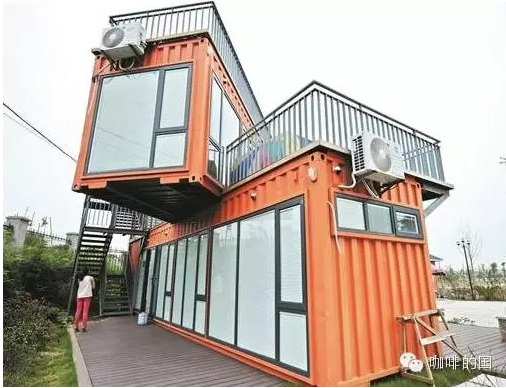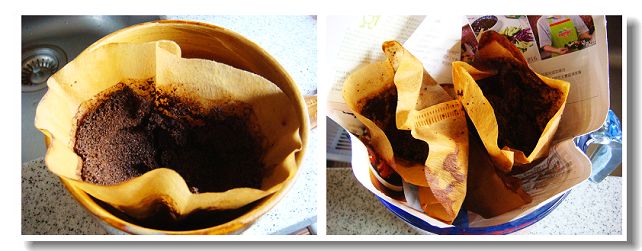Share the coffee roasting technology and talk about the smoke feeling of coffee roasting.
Foreword:
Recently heard a saying: coffee roasting, bean cultivation period, but the sense of smoke is very strong.
What I want to say is that the sense of smoke can not be lost by raising beans. The sense of smoke can be produced in two situations: first, the flavor of coffee itself is mainly smoky, and there is a lot of smoke in the flavor of this bean; second, it is caused by defects in baking, which is caused by poor coordination of exhaust air and firepower. However, there is only one problem caused by the bean cultivation period: the bean flavor extraction is unstable and will be light, because it releases too much gas and seeps too quickly under water, resulting in insufficient extraction.
I remember a few days ago, the winner of the top cup baking contest in Qinhuangdao and this year asked questions about baking and specially put on his own baked Ethiopian shepherd to compare his beans with his beans. During the cup test, I found that my beans had a little smoke, while his Yejia shepherd always showed a bright sweet and sour feeling like citrus and plums, plus blueberry aroma. The bitterness and smoke at the end are almost imperceptible.
With regard to the sense of smoke, I have also wondered whether it is because of the direct sealing during the bean cultivation period. He explained like this:
First of all, there is no way to raise beans with a sense of smoke. the sense of smoke appears on beans that should not have a sense of smoke, that is, baking defects have nothing to do with raising beans.
Second, after the top cup is baked, the cup will be tested and compared the next day, so do you say that the soy season is over?
Third, to understand how the sense of smoke is caused, either by its own flavor or by baking. The so-called bean cultivation is to release carbon dioxide, not to raise the sense of smoke.
Tell me how the sense of smoke is formed during baking.
First of all, the temperature, the so-called fire control, this is the basic skill, can not let the temperature run too fast, heating up too fast, causing a sense of smoke.
Second, it is necessary to understand the thickness of the furnace wall inside the baking furnace, the so-called specific heat and temperature sensitivity.
Third, to understand the so-called furnace pressure, to ensure that the furnace pressure balance under the adjustment of wind speed and temperature balance.
Fourth, some people say that the throttle will remove the flavor of the coffee (under the premise of not losing the pressure in the stove). I can tell you responsibly that it is nonsense. Inappropriate or too small control of the throttle is bound to cause a sense of smoke.
The baking method of the baking competition is not the same as the daily baking method of beans supplied to customers. During the competition, a cup test will be held on the second day, so it can be said that there are almost no beans, while beans with a sense of smoke will be deducted or directly PASS during the evaluation process.
The flavor is not prominent or unstable on the second and third day of conventional baking, but it begins to highlight on the fourth day and can be extended for 15 to 20 days.
If the bean is aimed at the shepherd, if it makes a sense of smoke, it is a baking defect. If you want to drink beans with a sense of smoke, you can choose something like Mantenin, which is his own characteristic. If you want to drink something bitter or cocoa, you can choose American, but the Ethiopian shepherd in Africa, as long as the plum fruit aroma and sweet and sour feeling.
(the above is the whole process of our discussion on the problem of smoking.)
Some people have to ask whether all Japanese baking is the pursuit of deep baking to highlight the sense of smoke?
I have seen Taguchi write this in a book (general meaning)
Why moderately baked beans, such as Yejia Shifei, are so popular now, and why they are so popular in the COE or SCAA evaluation? it is because all the beans participating in the evaluation need to use moderate baking as the baking standard, and SCAA does not like bitter taste, so more attention is paid to flower and fruit aroma in the evaluation, so the bitter evaluation content is not even set in the SCAA professional cup meter, then the beans with high moisture content are on the high side. High-density beans will be snubbed in the evaluation, because hard beans such as Guatemala and Kenya are extremely prone to oxalic acid in the process of moderate baking, and their own flavor can not be highlighted, which is extremely exciting. So people like Essel beans are popular because the aromas of flowers and fruits are extremely rich in medium-baked stalls.
But to say that Japanese baking does not bake all beans very deeply, experiencing charcoal burning is called Japanese baking. Japanese baking focuses on taste, taste and aroma, and it is necessary to find the best balance between aroma and taste, and can not blindly use medium and shallow baking, so hard beans with high moisture content, high density and large beans can better release their overall taste in the so-called Japanese baking.
Coffee is a kind of drink that experiences more bitterness. If you don't judge the bitter taste in the evaluation, it will really surprise people (Taguchi)
In the actual store operation, more consumers, including Americans, Australians, as well as Japanese and Korean, want to choose beans with rich taste and strong taste. This is my own personal experience in doing business. I like American beans more, because of their nutty flavor and thick bitterness, they seldom choose beans from Africa. Japanese and Korean guests are more likely to choose Mantenin or American beans. The highest acceptance of sour and fruity beans in Africa appears among the Chinese, because the novelty, because the coffee is still sour and not bitter, so the acceptance is very good. African honey treatment, solarization and so on will be well recognized by more professionals, practitioners and enthusiasts. In actual business, it is necessary to do a good job in fineness. Pursue the coexistence of flavor and taste.
Mr.Show Cafe authorized sharing
Important Notice :
前街咖啡 FrontStreet Coffee has moved to new addredd:
FrontStreet Coffee Address: 315,Donghua East Road,GuangZhou
Tel:020 38364473
- Prev

The cafe in the box?
If you give me a box, I can build it into a cafe! Little coffee, I have always felt that containers are actually a very forced thing, because it can open cafes inside! Come on, let's keep looking at those tall container cafes. If you have a box, you can pack it like this... Which one of these boxes is yours?
- Next

The antioxidant effect of coffee grounds is 500 times that of vitamin C.
The coffee industry plays a major role in the global economy, and its impact on the environment is also crucial. More than 2 billion tons of coffee by-products are produced worldwide each year. When coffee beans are roasted and dried, the husk (the skin of coffee beans) is usually removed during processing, while coffee grounds are discarded directly. The conventional wisdom is that these by-products: coffee grounds and coffee husks
Related
- A complete list of coffee bean names and their meanings! What is Yejia Shefi coffee? Where is Mantelin coffee?
- What grade does Arida Manor Kaduai coffee beans belong to? What treatment is Arida ASD slow anaerobic sun exposure?
- The milk tea cup becomes smaller?! Overlord Tea Girl launches a new "Return to Yunnan" series
- Accused of selling counterfeit and high-priced coffee beans! Well-known boutique coffee brand "Oukelao" bowed and apologized!
- How to make espresso dumplings? Can I eat coffee and glutinous rice balls together?
- Save the unformed and stagnant powder cakes in one second! What is the problem with stagnant water in the powder bowl of the espresso machine?
- What does hand-brewed coffee stop mean? Why is it not recommended to make coffee by hand?
- Is it normal to smell like coffee? Why does coffee smell like alcohol? What's wrong with the strong smell of cold extract ice dripping ice brewed coffee?
- How to solve the problem that hand-brewed coffee extraction takes too long? Why is the water flowing so slowly when making coffee?
- The main points of making Australian white coffee, the proportion details, how does Australian white properly foam and blend the flowers?

